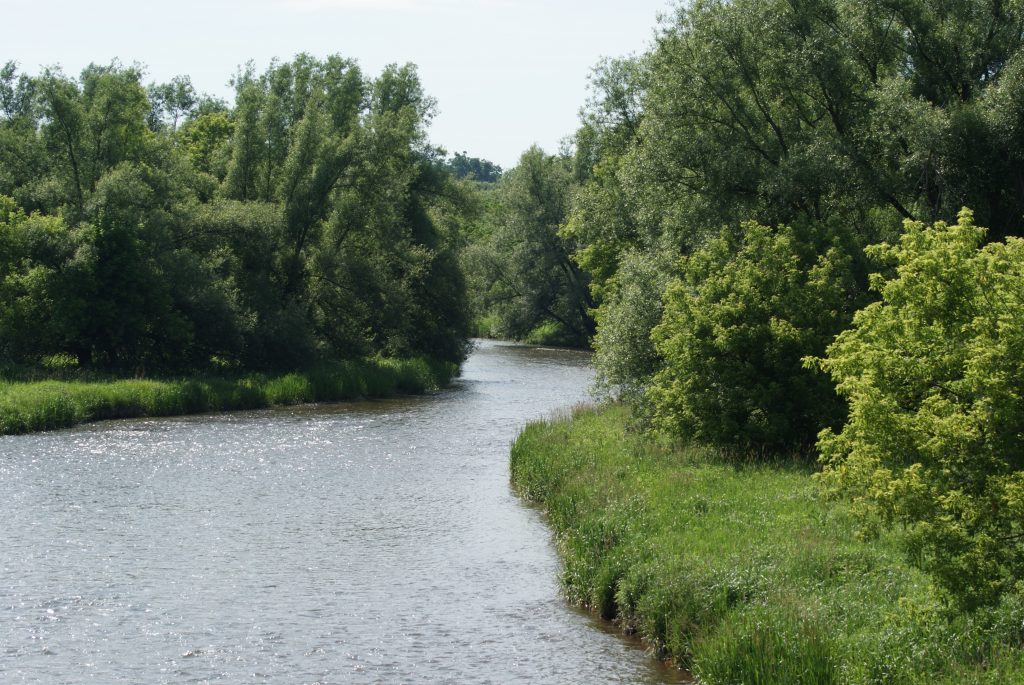Ontario is losing farmland at an alarming rate. And when farmland is paved over, the farms are gone forever. So are the jobs on them. And our access to local food shrinks. It’s clear that we need to do a better job of protecting our farms and helping farmers thrive. (You can help! Take action here).
Today, Environmental Defence and the Ontario Federation of Agriculture jointly released a report, Farmland at Risk: Why land-use planning needs improvements for a healthy agricultural future in the Greater Golden Horseshoe.
In the Greater Golden Horseshoe – an area that stretches from Niagara to Orillia to Peterborough – farming contributes $11 billion in economic activity and generates 38,000 jobs. Agricultural soils provide other benefits, including $1.6 billion in ecological services like water filtration and carbon offsets. But as the new report shows, multiple factors, from urbanization of agriculture land, fragmentation of the rural economy to encroachment of urban uses, create a hostile business environment and are putting this vital sector at risk.
In Canada only five per cent of land is fertile. And in Ontario, we’ve been paving over that prime farmland. In the last 30 years, we’ve lost over 300,000 acres. We can build houses anywhere but we can’t make any more productive soil.
The report highlights why we need to protect agricultural land and how changes to land-use planning can help us meet the challenge of preserving crucial farmland as more people call the Greater Golden Horseshoe home.
At the moment, planning is really geared towards residential development – not farming. Farmland is typically viewed as development land in waiting rather than a finite resource. And among decision-makers, there appears to be limited understanding of the needs of farm businesses or the agricultural system.
It’s time for a fresh perspective on farmland in the GGH, one that sees agriculture as a permanent feature of the regional landscape and farming as an essential component of our economy and cultural heritage. In the planning process, farming needs to be recognized and valued as an economic activity – not seen as an afterthought or secondary concern behind residential development.
The 2015 policy review of Ontario’s Growth Plan is a chance to strengthen how the province manages growth in the Greater Golden Horseshoe. We know that more people will move into the GGH. The question is how we grow. Do we keep growing out and sprawling over farmland? Or do we grow up and in.
The choices made about growth affect our economy, the health of our communities, our access to local food and nature, how we move between work, school and home and our quality of life.
Seventy-five cent of the best farmland in the GGH is outside of the Greenbelt and vulnerable to being paved over. That’s why it’s important that the review of the province’s Growth Plan supports hard urban boundaries and changes growth patterns away from sprawling on farmland.
A Neptis Foundation report shows that there is already enough land allocated by municipalities for the expected growth to 2031 and beyond. And we know that we are now using less land for housing than in the past so our designated urban land should last longer. Also, recent forecasts for Ontario have reduced the long term population estimates for the GGH, with about 1 million fewer people expected to move into the region. All this means that we can support the expected population growth and preserve important agricultural lands by building more compact communities.
With smarter (more compact growth), we can protect farmland and build vibrant, transit-friendly, walkable communities – places where more of us actually want to live.
Some municipal governments, however, are missing the opportunity to build smarter cities. Just last week, York Region Council supported a growth management plan to expand urban boundaries, which will lead to gobbling up more farmland for sprawl development, instead of building less costly intensified development that supports compact, walkable communities.
Even while municipalities, like York Region, are planning to continue the pattern of sprawling low-density housing, some members of the development industry have acknowledged the importance of changing our development patterns as noted in the Pembina Institute and Ontario Homebuilders Association report: Make Way For Midrise. The report identifies that a larger supply of medium-density housing options should be built near transit in urban areas to meet increasing needs as more young families opt to stay in the city and empty nesters move downtown from the suburbs.
Smart (compact) growth planning directs growth to already existing urbanized areas, where it is far less expensive to use existing infrastructure like sewers, roads and transit to support our growing urban population.
Greenfield (farmland-based) housing is too costly to our economy, our environment and our shared climate. It’s time that farms get the respect they deserve. It’s time for sprawl developers to stop painting farmland as development land in waiting.
If we truly value a local food and farming future, we need to treat farmland as a finite resource and see agriculture as a key part of our economy.
You can help. Take action and tell Ontario it’s time to prioritize smart growth to build vibrant communities and protect farmland.









